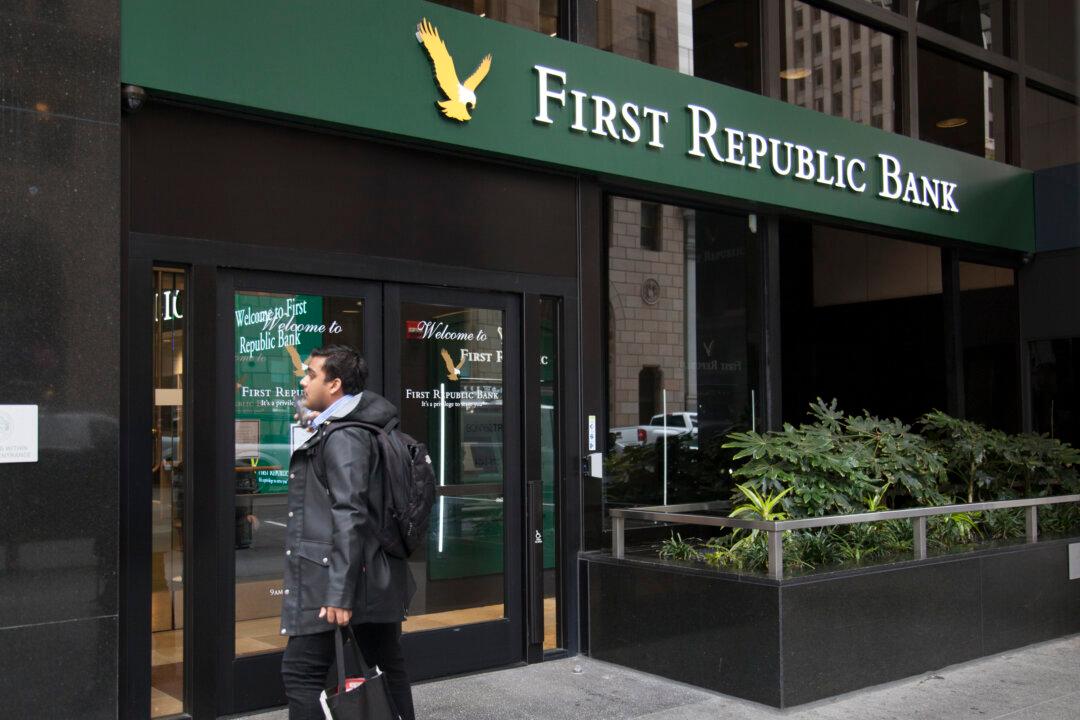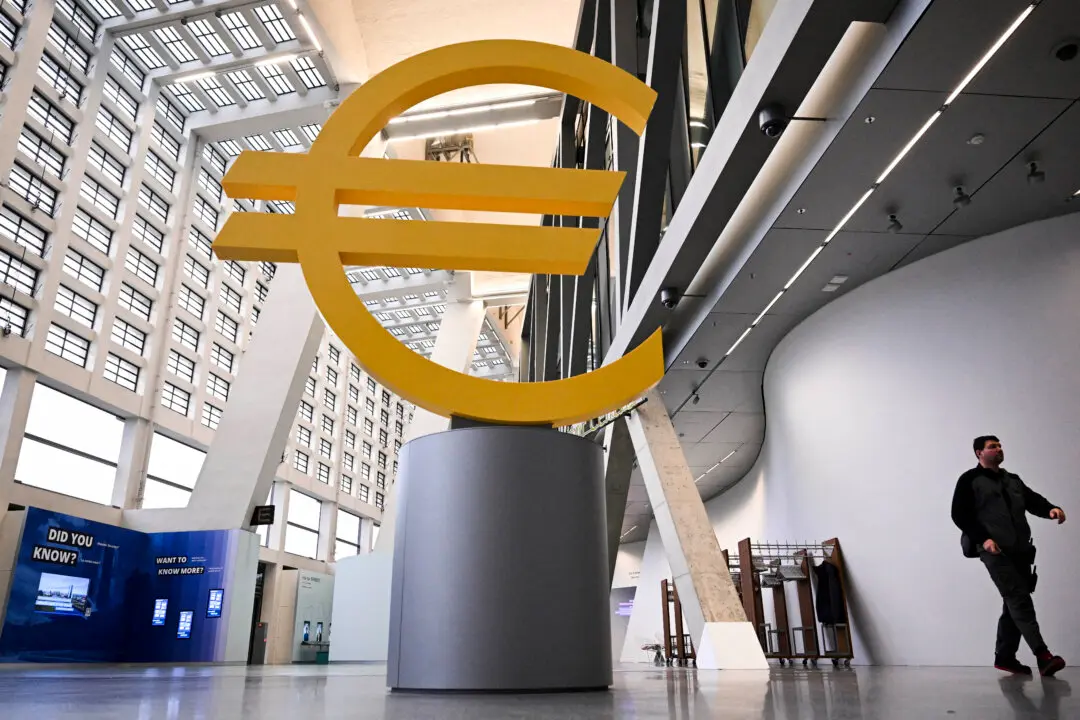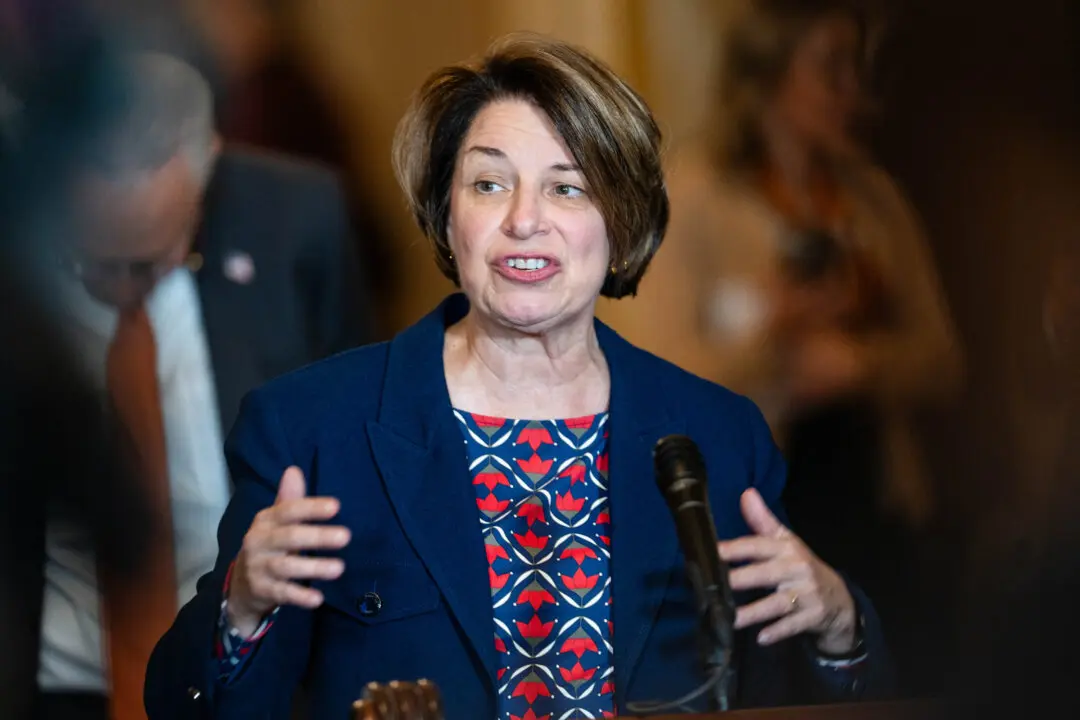First Republic Bank shares staged a sharp relief rally on April 27 as the beleaguered San Francisco-based lender fights for its survival and investors and customers consider what might be next.
Shares of First Republic rose more than 8 percent in volatile trading following a steep selloff earlier in the week that erased about 60 percent of the stock’s value, after the bank said its depositors had withdrawn more than $100 billion of their savings in the first quarter, in the wake of recent bank failures. The shares had jumped nearly 20 percent in early trading.





